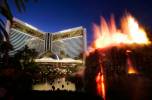LV faces big Symphony Park bill with or without soccer stadium
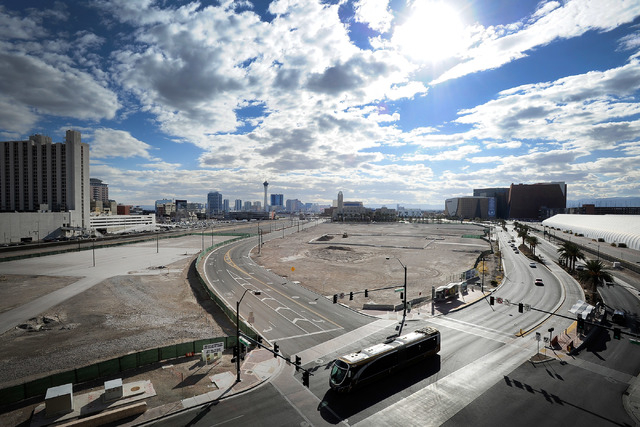
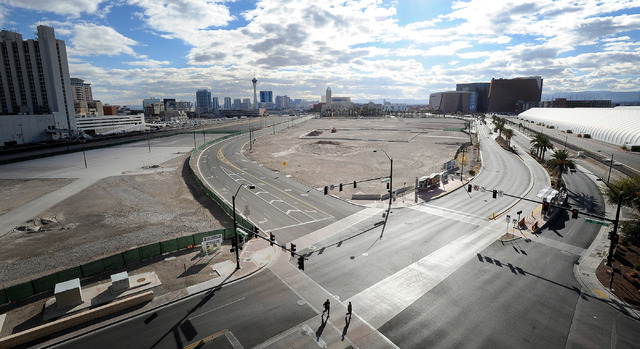
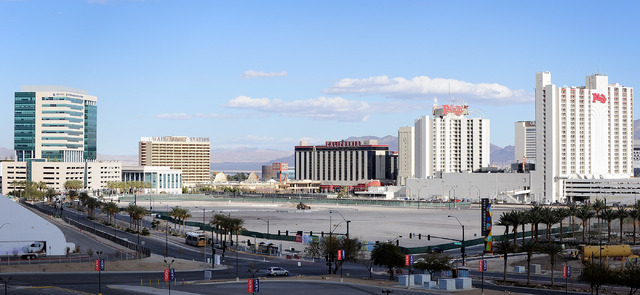
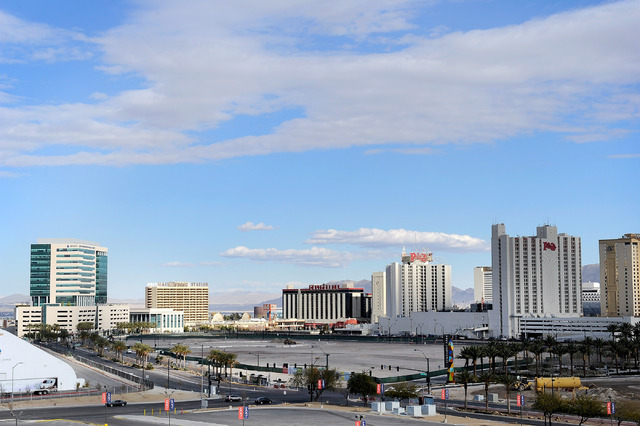
Las Vegas might or might not host a Major League Soccer franchise in 2017.
City leaders might or might not agree to help fund a proposed $200 million downtown soccer stadium and could yet back away from diverting $3 million in parks funds to help pay for it.
One thing is certain: Las Vegas will need more than a soccer stadium to help pay down its eight-figure investment in Symphony Park.
The 61-acre park — frequently touted as the heart of the city’s downtown redevelopment efforts — already is home to The Smith Center for the Performing Arts and the Lou Ruvo Center for Brain Health. The pair of pre-recession developments anchor the southern third of the former Union Pacific Railroad yard between Main Street and Grand Central Parkway.
Each of those nonprofit-managed projects has created hundreds of jobs and drawn thousands of visitors to a once-dilapidated stretch of downtown.
But neither pays property taxes needed to help the city repay $80 million in bonds meant to support cleanup and infrastructure improvements at the still half-empty rail yard. It remains unclear how the city plans to make those payments without a major uptick in private, tax-paying Symphony Park-area development.
Las Vegas, which borrowed against future increases in redevelopment area tax revenue in order to finance its ongoing Symphony Park cleanup, has, like other Southern Nevada municipalities, witnessed an overall decline in redevelopment area property values since the start of the Great Recession. The agency’s latest audit indicates property tax collections are down 40 percent since fiscal year 2008.
Critics of the city’s redevelopment agency — the staffers tasked with economic development and anti-blight efforts across more than 4,800 acres downtown — say that when it comes to financing Symphony Park, city officials have managed to compound those property tax losses by leveraging money they don’t have to provide park developers with infrastructure incentives they might not use.
Agency defenders contend that without public subsidies, developers will never make good on plans to turn the park into the city’s cultural and entertainment hub.
Both sides can at least agree on the easiest way to settle Symphony Park’s hefty preconstruction tab: Persuade private, tax-paying developers to build out the northern end of the park, and quickly.
Without a big spike in Symphony Park-area growth, they fear it will be up to redevelopment area taxpayers — and the city’s general fund — to subsidize dozens of acres of well-appointed dirt.
“There is not enough (redevelopment agency) revenue to cover its debt service, and we had to hurriedly refinance those (Symphony Park) bonds last year,” said accountant and City Councilman Bob Beers. “We need to get out from under that bond interest as soon as possible.
“We had feasibility studies that said if you, the city, go borrow $100 million to clean up this dirt, lay pipes, provide electricity and build streets and curbs, these lots will sell like pancakes. … They haven’t.”
‘CLARITY’ NEEDED FROM DEVELOPERS
Las Vegas makes more than $10 million in annual bond payments on Symphony Park. Its redevelopment agency collects only $34,000 in yearly property tax revenue from the largely undeveloped property.
City officials estimate that a privately financed stadium would take a $1.5 million chunk out of the agency’s annual Symphony Park bond payments.
They say they still are looking into how much property tax gains attributed to a recently proposed publicly subsidized soccer stadium might add to the redevelopment agency’s yearly tax rolls.
If city leaders elect to kill that proposal, Cordish Companies — the developer behind the much-ballyhooed effort — looks unlikely to become one of Symphony Park’s long-term suitors.
The Baltimore-based company already has opted out of talks to build “the Live District” — a massive stadium-adjacent shopping and live entertainment district once expected to generate millions of dollars in new annual property tax revenue needed to pay down redevelopment area bonds.
The good news for Cordish developers is that they will get paid either way.
A contract extension approved by City Council members in January awards the company $1.2 million in unused stadium planning funds should the two sides fail to reach a stadium development deal by December.
Cordish representatives declined to comment on whether they plan to reinvest that money in Las Vegas.
Chief Operating Officer Zed Smith said the company is focusing all of its energies on bringing a soccer stadium to Symphony Park. He said Cordish’s decision not to move ahead with the Live District boiled down to concerns raised by “a few major stakeholders in the downtown area” worried that the development could compete with existing businesses.
Forest City Enterprises Inc., the Cleveland-based company contracted to build Las Vegas’ $150 million City Hall, also is sitting on 18 undeveloped acres in the city’s downtown redevelopment area.
Some two-thirds of that total was bought by the company in 2008, part of a sprawling five-block “civic center campus” across the street from City Hall that hasn’t yet made it off the drawing board.
Much of the rest is unspoiled dirt in the northern corner of Symphony Park, acreage the company acquired as part of a complex land swap deal to build and finance Las Vegas’ 3-year-old City Hall. The company has pledged to develop both lots under the terms of that same deal.
It has been four years since Forest City agreed to bring its civic center project and a 1.6 million-square-foot hotel-casino to downtown.
Today, both sites are bare.
Las Vegas, which makes $13.9 million in annual lease payments to the company for City Hall, has picked up a $32 million tab for pre-development site improvements on Symphony Park parcels. Much of that money has gone toward predevelopment infrastructure on Forest City parcels.
Forest City could not be reached for comment on the future of its downtown projects.
More than 250 city economic development and redevelopment agency employees and millions of dollars in future property tax rebates have not yet convinced the company to break ground in Symphony Park or at its parcels between Garces and Lewis avenues near City Hall.
The question for city leaders is not when, but if, they ever will.
“We need to get clarity quickly about what’s going to happen at the north end of Symphony Park,” said City Manager Betsy Fretwell. “(The Cordish-proposed stadium) has created a bit of uncertainty, but there’s a good bit of recovery going on right now, and we’re hopeful that will spur development.”
“One of the things we’ve learned about downtown is that reinvestment works,” she added. “We’ve made significant reinvestments in City Hall, in a new museum; we’ve been able to lure new businesses in the tech and entrepreneurial sector here.
“All of those things are coming along. They’re happening.”
FUTURE REVENUE IN DOUBT
Newland Communities, a third Symphony Park-area contractor, owns months of exclusive development rights on more than half of downtown Las Vegas’ would-be stadium parcel.
The company — which the city reimbursed for $928,487 in project management costs last year — once planned to build a $1.4 billion, 130,000-square-foot residential and retail development on 16 acres at the park.
Those plans have been pared down twice since 2007, leaving the city hoping for as little as a third of the project’s once-anticipated $12.7 million in new annual redevelopment area tax revenue.
That means that whatever projects Forest City, Cordish and other developers might hope to build in the area would have to generate upward of $6 million in new annual property tax revenue in order for the city to keep pace with projected annual bond payments on its initial eight-figure Symphony Park investment. That’s more than four times the projected number of new tax dollars officials say a privately financed stadium would bring to the area.
What are the chances of attracting that level of development anytime soon?
Pretty slim, according to longtime financial adviser and former Clark County Finance Director Guy Hobbs.
“I’ve heard that uncertainty surrounding the stadium has been a concern for some of the developers on (stadium-adjacent) parcels,” Hobbs said Monday. “It seems like with a parcel like this you don’t have a lot of synergies you might have elsewhere.
“If you’re looking, for example, to build a major multi-use development that backs up to the Molasky Corporate Center on one side and railroad tracks on the other — and you’ve got retailers on Fremont Street worried about it just a few blocks away — that’s going to be a little bit tougher to develop.”
City Finance Director Mark Vincent, Deputy City Manager Scott Adams and Economic Development Director Bill Arent were not made available to comment on Symphony Park’s future. City spokeswoman Diana Paul said the trio deferred comment on the project to City Manager Fretwell.
City Council members can vote to kill Cordish’s oft-beleaguered downtown soccer stadium proposal as soon as Wednesday.
It could take another 16 months before developers with Newland and Forest City — the two companies set to inherit Cordish’s exclusive negotiating rights — are ready to unveil their plans for the would-be stadium parcel.
Meanwhile, the city will continue to pay $200,000 in monthly interest on Symphony Park’s outstanding $80 million infrastructure debt.
Two out-of-state companies could soon control the rights to Symphony Park’s future.
What they plan to do with those rights is anyone’s guess.
Contact James DeHaven at 702-477-3839 or jdehaven@reviewjournal.com. Find him on Twitter: @JamesDeHaven.
Click for a larger image.
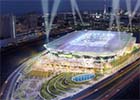
An arena plan for Symphony Park
More coverage
Complete coverage of the various stadium and arena proposals.




